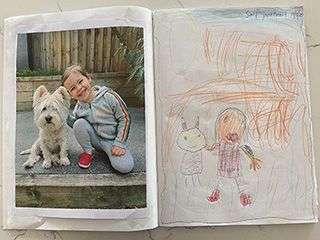Feature Artist: Elsa
From time to time I like to throw the spotlight on a young artist because it never fails to amaze me how wonderfully creative and talented children are. Jane showcased the winners of the Young Archies a couple of days ago and today it is the turn of Elsa as we examine her artistic development from 2 years to 5 years of age.

My own art studio is comprised of two rooms: one for me and the big kids in my life. One of these big kids, a budding young lawyer, produces one painting a year as a form of relaxation and personal satisfaction in the achievement of a work of art.
But back to the little kids in my life. They have free use of the other room where there are no contraints on how they create. Yes, they have been known to paint each other!!! No-one leaves their children at my place expecting them to stay clean! The smaller creatures in my life know that they can always paint, draw, construct at my place - free from almost any constraints.
This year I have missed hearing the sounds of children painting and constructing but one of the mums has collated her daughter's work from aged 2 - 5 to form an exhibition for us. Some of the work was done at Elsa's Early Learning Centre under the supervision of the art teacher, other pieces were done at home under the guidance of Mum and Dad.
At two years of age Elsa was throwing paint over the paper in unconstrained experimentation and the colour combinations, shapes and lines that emerged were most likely all accidental. But Elsa's mind is operating at a different level and from this experience she is gaining information about how to create lines, shapes and colours: the fundamental elements of all art.
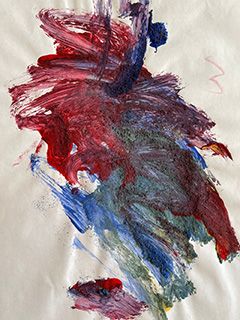
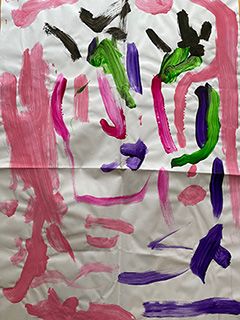
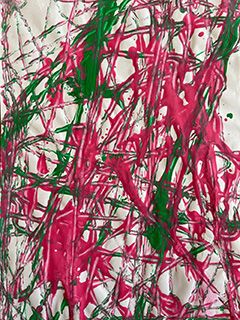
As young as she is, Elsa is an artist - she wants to record visually the world around her. Between the age of 3 years she was starting to form recognisable shapes from her immediate environment: herself, family and pets. She experimented with shapes and colours.
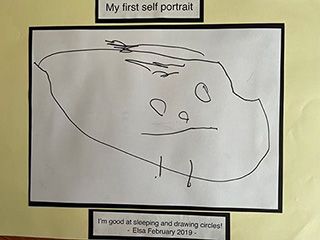
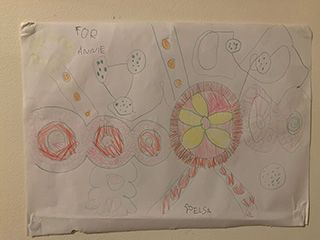
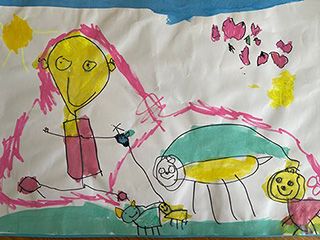
And by 4 years there is an explosion of awareness and confidence in recording her visual environment. Elsa spent most of her fourth year of life in lockdown - some time at home and some in the Early Learning Centre.
First of all let us look at some free drawing done by Elsa at home. I am sure you will recognise Rapunzel - a favourite amongst all girls.
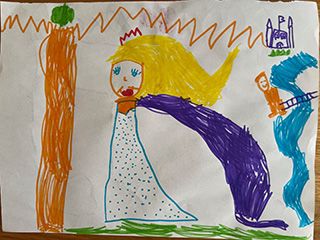
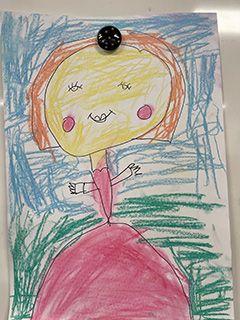
In stark contrast this sketch looks alarmingly like Edvard Munch's The Scream!
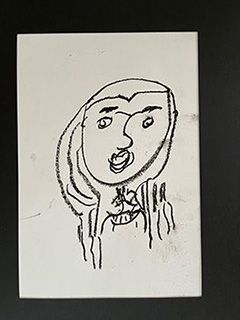
Whilst Elsa's portrait above turned out accidentally to look a little like The Scream there is no accident that her cat (below) looks like a Paul Klee's cat.
Time in the ELC Elsa attends is devoted to teaching the children about famous artists and their styles. The importance of copying is endorsed by Elsa's teachers and handled with professional skill where the children are exposed to various stimuli and allowed to experiment without criticism. Education has come a long way from when we were at school!
As you can see Elsa is extremely proficient at creating her interpretation of the given artistic task. She is very observant and has the fine motor skills to carry out the task with confidence.
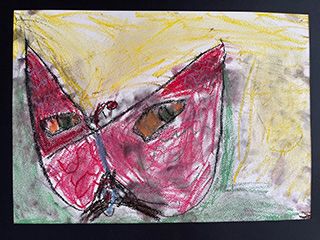
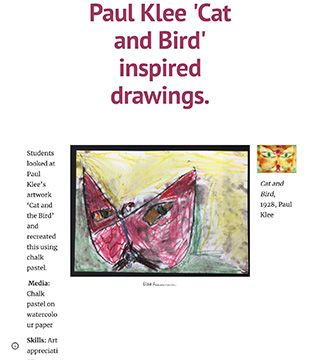
And who better that Pablo Picasso to teach a child about art. His faces of women offer an excellent model for children to experiment with the arrangements of facial features.
“Every child is an artist, the problem is staying an artist when you grow up.” Pablo Picasso
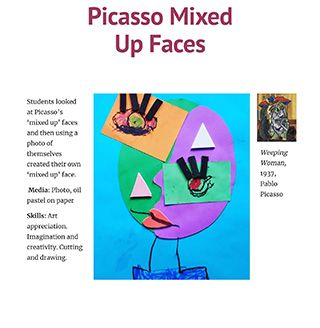
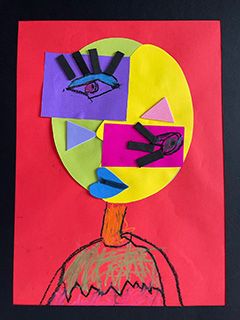
From one stimulus can come a whole raft of creative works. Below we see Elsa producing a range of different tree shapes following the directed lesson on making a plasticine tree.
I firmly believe we all start out when very young as creative individuals when fear, expectation, self consciousness have not appeared in the child's mind to wield their negative impact.
If children are given the opportunity to experiment with a wide variety of materials through both controlled and uncontrolled experiences, their creative skills will flourish.
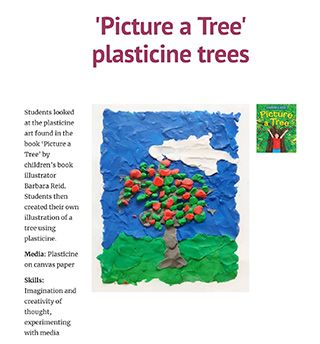
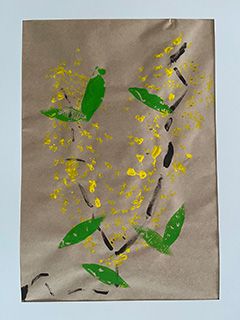
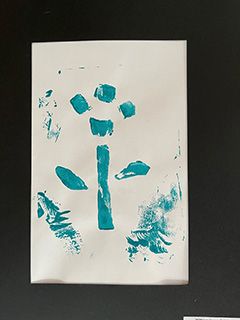
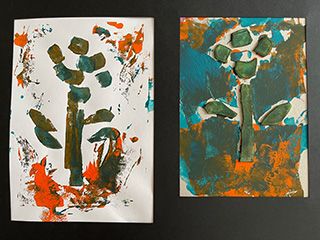
In all of Elsa's works there is a strong awareness of shape and pattern. Look at these examples where Elsa has been free drawing and using her growing knowledge of the structure of objects which has caught her attention. Note the repetition of patterns. And note the inclusion of language adding to the visual expression.
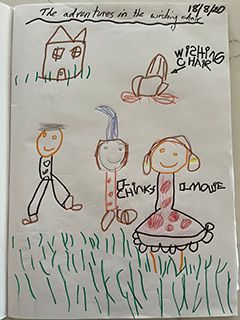
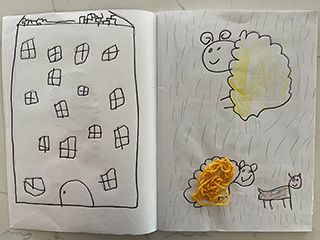
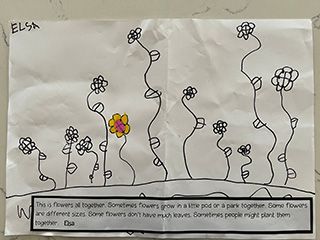
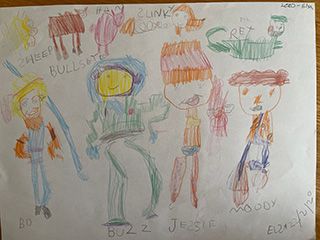
In these examples below, colour has become more dominant as Elsa her perception of her world using coloured pencils, crayons, chalk, paper, and paint.
Give a child opportunity and a wide range of materials and you will see creativity burst into flower.
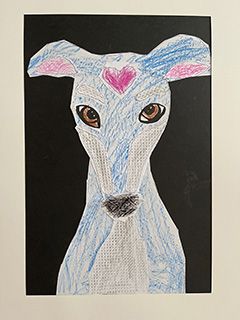
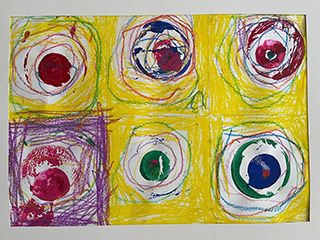
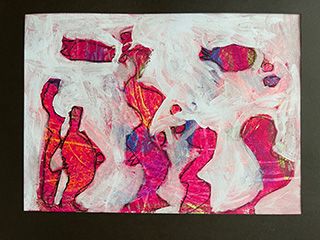
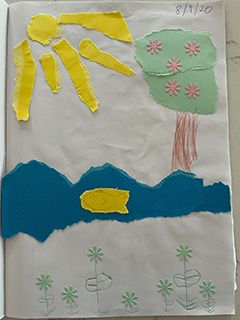
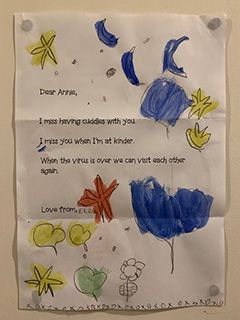
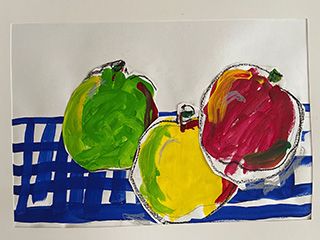
A special thank you to Elsa and her parents who agreed for her works to be shown on the AnArt4Life blog.
I'll let Elsa sign off with her own self portrait.
